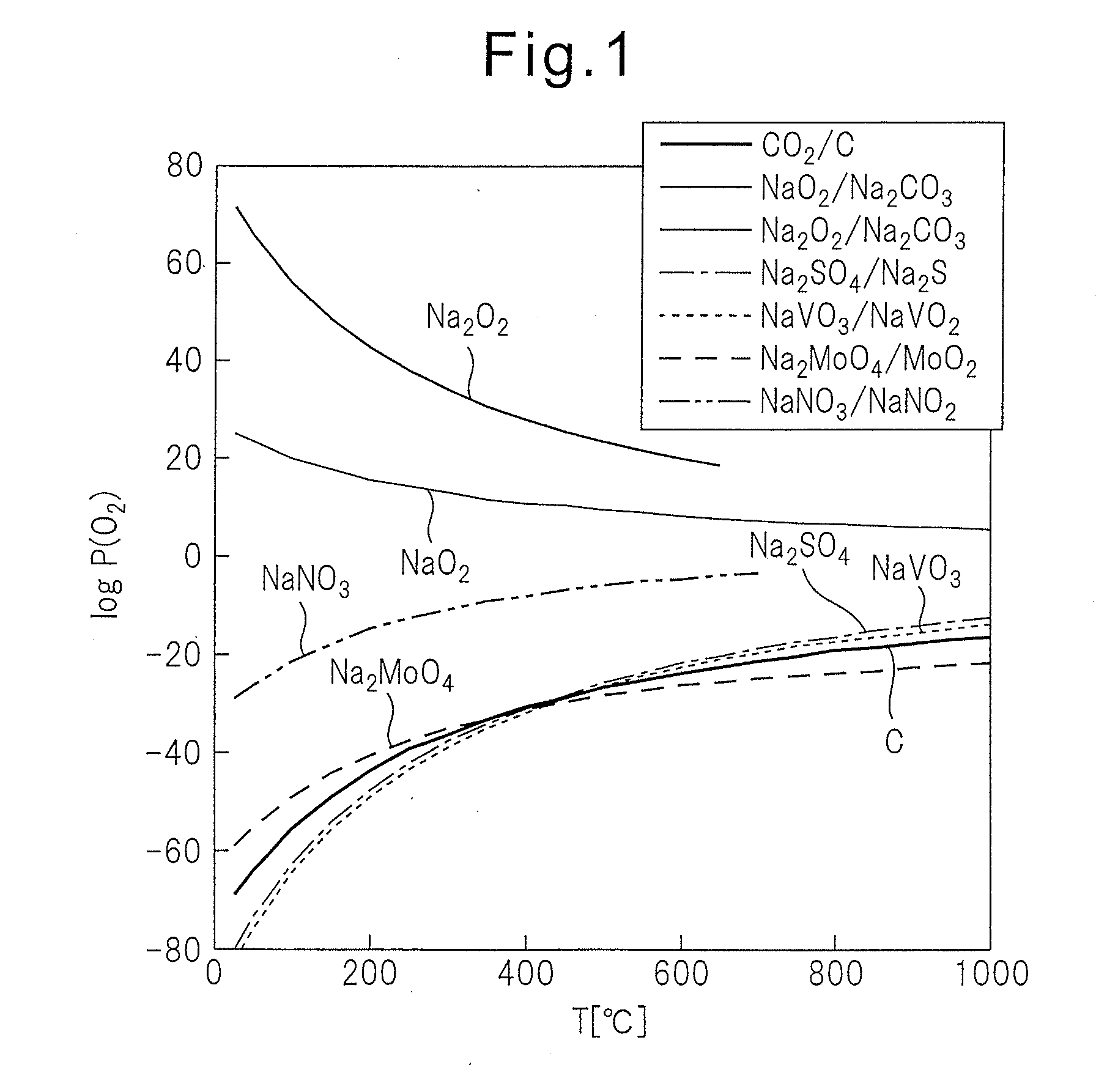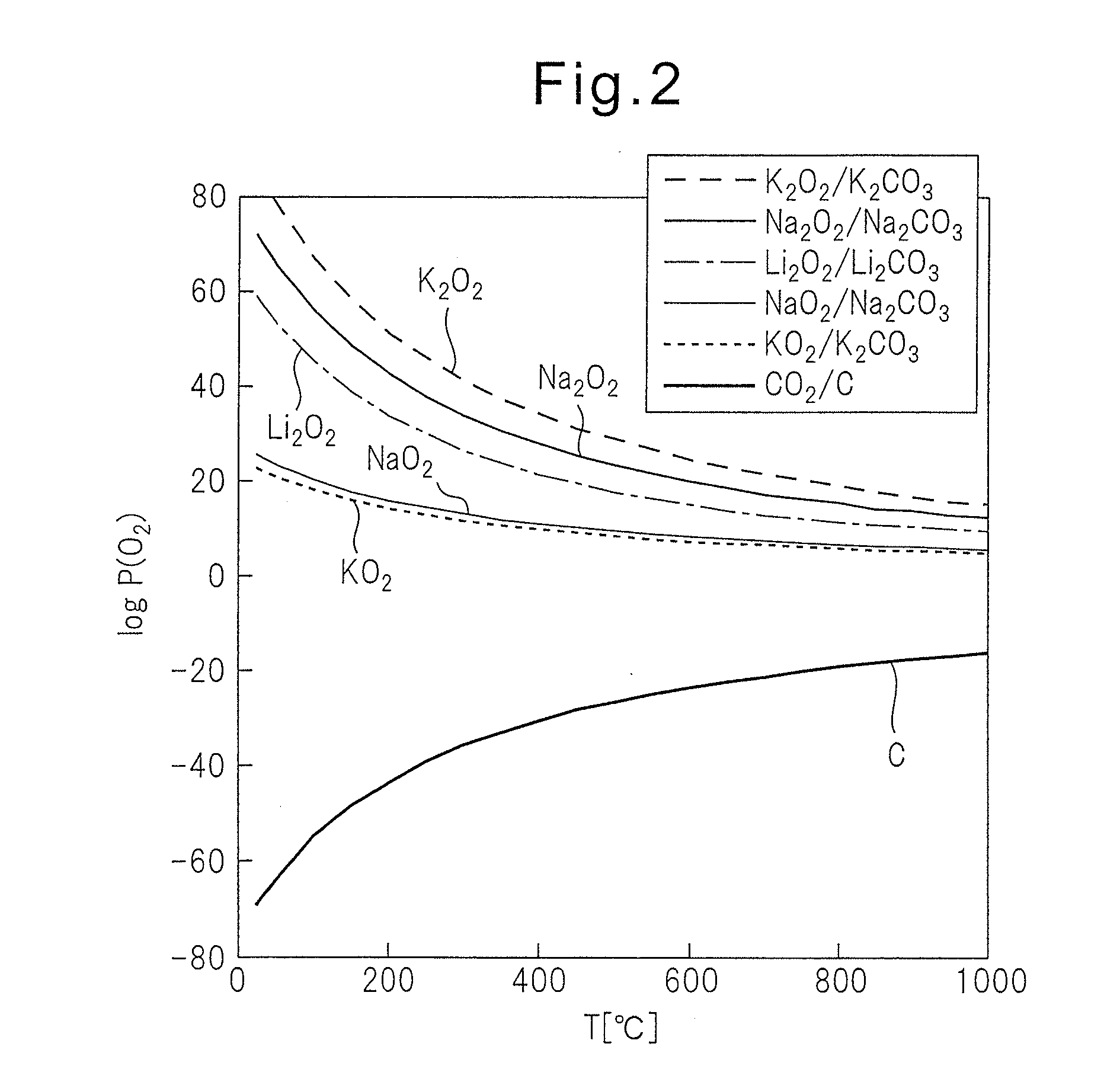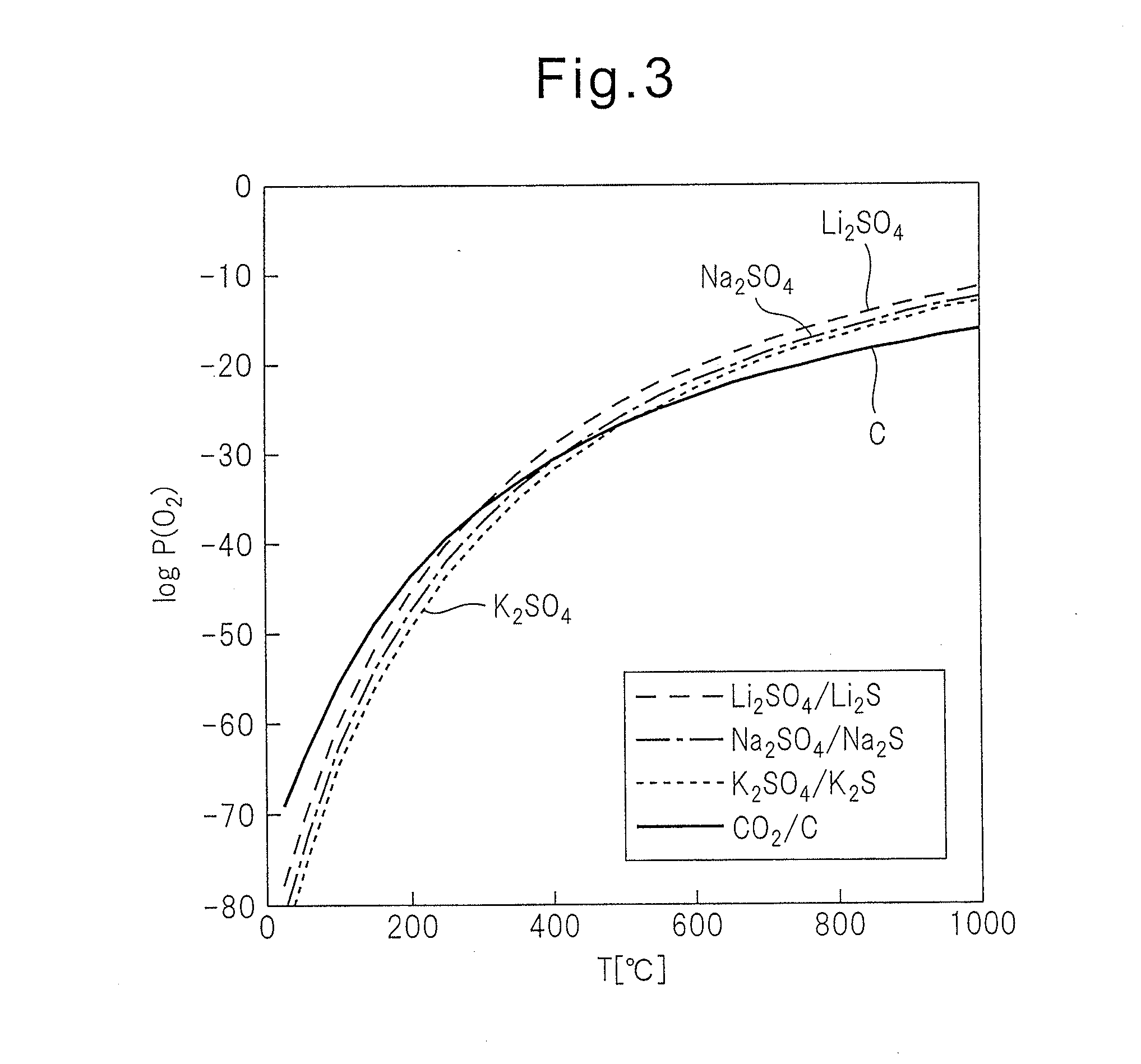Method for recovering active material from waste battery material
a waste battery and active material technology, applied in the field of recovering active materials from waste batteries, can solve the problems of industrially difficult to precipitate lithium that is highly soluble in aqueous solutions, industrially substantially difficult to separate alkali metal elements and lithium from each other, and the difficulty of lithium isolation for recovery
- Summary
- Abstract
- Description
- Claims
- Application Information
AI Technical Summary
Benefits of technology
Problems solved by technology
Method used
Image
Examples
example 1-1
K2CO3 / Na2CO3 Activation Agent
[0389]In 5 g of the same electrode material mixture as in Comparative Example 1-1 was mixed an activation agent including K2CO3 and Na2CO3 in amounts of 0.1 mol and 0.1 mol, respectively, with respect to 1 mol of the positive electrode active material in the electrode material mixture to produce a pre-activation mixture. The obtained mixture was subjected to activation at a retention temperature of 700° C. for a retention time of 4 hours. The post-activation mixture recovered was made into a slurry, which was then filtered and dried to obtain an active material. The treatment conditions are indicated in Table 1-A.
[0390]Table 1-B indicates the composition, the crystal structure, the average particle diameter, and the specific surface area of the obtained active material, the combustible substance content, and the discharge capacities at 0.2 C and 5 C measured by charge / discharge test of a coin battery using the recovered product as a positive electrode ac...
example 1-2
Li2CO3 / K2CO3 Activation Agent
[0392]In 5 g of the same electrode material mixture as in Comparative Example 1-1 was mixed an activation agent including Li2CO3 and K2CO3 in amounts of 0.1 mol and 0.1 mol, respectively, with respect to 1 mol of the positive electrode active material in the electrode material mixture to produce a pre-activation mixture. The mixture was subjected to activation at the retention temperature of 700° C. for the retention time of 4 hours. The post-activation mixture recovered was made into a slurry, which was then filtered and dried to obtain an active material. The treatment conditions are indicated in Table 1-A.
[0393]Table 1-B indicates the composition, the crystal structure, the average particle diameter, and the specific surface area of the obtained active material, the combustible substance content, and the discharge capacities at 0.2 C and 5 C measured by charge / discharge test of a coin battery using the active material as a positive electrode active ma...
example 1-3
Li2CO3 / K2SO4 Activation Agent
[0395]In 5 g of the same electrode material mixture as in Comparative Example 1-1 was mixed an activation agent including Li2CO3 and K2SO4 in amounts of 0.1 mol and 0.1 mol, respectively, with respect to 1 mol of the positive electrode active material in the electrode material mixture to produce a pre-activation mixture. The mixture was subjected to activation at the retention temperature of 700° C. for the retention time of 4 hours, and the other conditions were made the same as those in Example 1-1 to obtain an active material. The treatment conditions are indicated in Table 1-A.
[0396]Table 1-B indicates the composition, the crystal structure, the average particle diameter, and the specific surface area of the obtained active material, the combustible substance content, and the discharge capacities at 0.2 C and 5 C measured by charge / discharge test of a coin battery using the active material as a positive electrode active material.
[0397]The crystal str...
PUM
| Property | Measurement | Unit |
|---|---|---|
| specific surface area | aaaaa | aaaaa |
| specific surface area | aaaaa | aaaaa |
| specific surface area | aaaaa | aaaaa |
Abstract
Description
Claims
Application Information
 Login to View More
Login to View More - R&D
- Intellectual Property
- Life Sciences
- Materials
- Tech Scout
- Unparalleled Data Quality
- Higher Quality Content
- 60% Fewer Hallucinations
Browse by: Latest US Patents, China's latest patents, Technical Efficacy Thesaurus, Application Domain, Technology Topic, Popular Technical Reports.
© 2025 PatSnap. All rights reserved.Legal|Privacy policy|Modern Slavery Act Transparency Statement|Sitemap|About US| Contact US: help@patsnap.com



